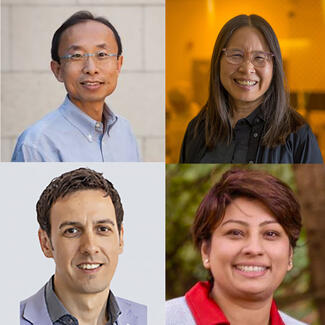Image

Stanford Nanofabrication Facility (SNF) at the forefront of chip manufacturing
Summary
The state-of-the-art facility will expand to explore new possibilities from bio-electronics to quantum computing
Sep
2024
Since its inception as the Integrated Circuits Laboratory more than a half-century ago, the Stanford Nanofabrication Facility (SNF) has been the go-to resource for Stanford researchers and industry collaborators across Silicon Valley working on the next generation of semiconductor-based computer chips. The Stanford Nanofabrication Facility operates out of the Paul G. Allen Building, named for the late Microsoft co-founder. Today, a major renovation promises to keep the facility at the forefront of chip manufacturing through a new collaboration with and funding from the Taiwan Semiconductor Manufacturing Corporation (TSMC).
The announcement comes on the wave of major developments in the chip industry. The August 2022 rollout of the CHIPS and Science Act capped the Biden administration’s $150 billion initiative to bolster the American semiconductor industry. In June 2024, American chip designer Nvidia (founded by Stanford Engineering alumnus Jensen Huang, EE MS ’92) became the world’s most valuable company, a measure of global demand. Alongside these developments, a team led by Stanford engineers were awarded a multimillion-dollar Department of Defense contract to enable the translation of next-generation chips from university laboratories to fabrication (lab-to-fab) at large scale in industry.
“Suddenly, hardware is king … again,” says Professor H.-S. Philip Wong.
“It’s the beginning of a new era for the SNF, but it’s important to note that the SNF is not just a focus of semiconductor research for Stanford alone,” says Mary Tang, managing director of the SNF. “It serves more than 600 users annually, about 25% from outside Stanford in industry, government, and other academic institutions. All these organizations will rely on our state-of-the-art facilities and expertise to explore new possibilities in chipmaking for a variety of applications from bio-electronics to quantum computing.”
Read more, including statements from Professor and Chair Mark Horowitz, Professor Srabanti Chowdhury, and Professor Eric Pop.
Excerpted from "School of Engineering to upgrade Stanford Nanofabrication Facility"
Published : Sep 12th, 2024 at 07:11 am
Updated : Sep 12th, 2024 at 02:54 pm